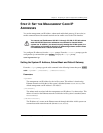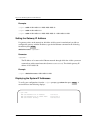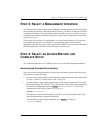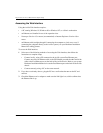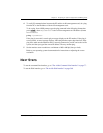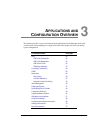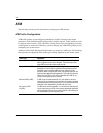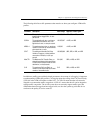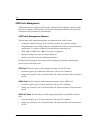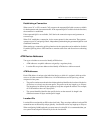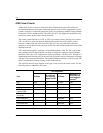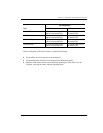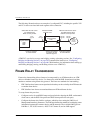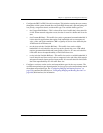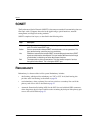
Chapter 3: Applications and Configuration Overview
Avidia System Configuration and Management User Manual 21
The following table lists traffic parameters that must be set when you configure ATM traffic
profiles.
In addition to traffic types and their related parameters, the concept of cell tagging is important
to understanding ATM traffic profiles. Cell tagging means the setting of the Cell Loss Priority
(CLP) bit in the ATM cell header to either 0 or 1. A CLP of 0 means that the cell cannot be
dropped to accommodate traffic congestion. A CLP of 1 means that the cell can be dropped to
manage traffic congestion. The Avidia system does not currently support traffic types that
differentiate between tagged and non-tagged cells, nor does the system tag cells that do not
conform to the quality of service contract.
Parameter Description Valid Range Applies to Traffic Types…
PCR0+1 The peak cell rate to apply to both
tagged and non-tagged cells, in cells
per second.
150-353,207 UBR, CBR, rt-VBR, nrt-VBR
SCR0+1 The sustainable cell rate, or minimum
guaranteed transmission rate, to be
applied to all cells, in cells per second.
150-353,207 rt-VBR, nrt-VBR
MBS0+1 The maximum burst size, or maximum
number of cells that can be transmitted
at the peak rate, in cells.
1-65,536 rt-VBR, nrt-VBR
CDVT The maximum allowable Cell Delay
Variation Tolerance, or delay between
consecutive ATM cells, in cells per
second.
150-080,000 UBR, CBR, rt-VBR, nrt-VBR
MaxCTD The Maximum Cell Transfer Delay, or
elapsed time between the transmission
of a cell and the receipt of that cell at its
destination, in microseconds.
20-1,000 CBR, rt-VBR, nrt-VBR
CLR The maximum Cell Loss Ratio, or
number of lost cells divided by the total
number of transmitted cells.
5-12 CBR, rt-VBR, nrt-VBR



